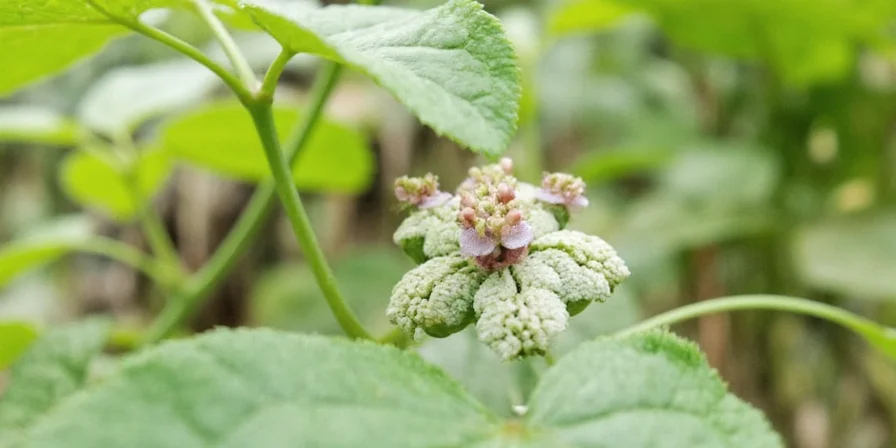
Chervil is a delicate French herb with mild anise and parsley flavors that elevates dishes through subtle complexity rather than overpowering intensity. Unlike bolder herbs, chervil works as a flavor enhancer that allows other ingredients to shine—making it ideal for delicate sauces, salads, and fish dishes where balance matters most. This guide provides practical techniques for home cooks to use chervil effectively, including proper storage methods, accurate substitutions, and timing strategies to preserve its delicate flavor.
Chervil Essentials: What Home Cooks Need to Know
| Key Characteristic | Practical Information |
|---|---|
| Flavor Profile | Mild anise with subtle parsley notes (less intense than tarragon) |
| Fresh vs. Dried | Use fresh only—drying destroys 70% of flavor compounds |
| When to Add | Final 30 seconds of cooking (heat above 140°F degrades flavor) |
| Best Pairings | Eggs, fish, chicken, carrots, potatoes, and creamy sauces |
| Storage Life | 4-7 days refrigerated with proper technique (see section 5) |
Chervil's magic lies in its ability to enhance rather than dominate. This "forgotten herb" of French cuisine contains subtle volatile compounds that complement other ingredients without overwhelming them. While many home cooks reach for bolder herbs like basil or cilantro, chervil creates culinary harmony impossible with single-note alternatives. Its gentle anise notes come from estragole at lower concentrations than tarragon, making it versatile for both savory and slightly sweet applications.
Chervil Through Time: Historical Evolution
Understanding chervil's historical context reveals why its delicate nature persists in modern cuisine:
- 16th-17th Century: Adopted by French chefs as a key component in "fines herbes" after replacing more pungent medieval herbs. (Source: Encyclopedia Britannica)
- 1903: Formally codified in Escoffier's Le Guide Culinaire as essential for balanced sauces, requiring fresh-only usage. (Source: Escoffier Archive, p.116)
- 1950s-Present: Declined in commercial availability due to short shelf life (4-7 days vs. 2+ weeks for hardier herbs), maintaining its specialty status. (Source: UC Master Food Preservers)
How to Use Chervil: Practical Techniques for Home Cooks
Chervil's delicate nature requires specific handling to preserve its flavor. Unlike hardy herbs that withstand cooking, chervil's volatile compounds begin degrading at just 140°F (60°C). Follow these proven methods for maximum flavor impact:
- Finishing technique: Sprinkle chopped leaves in the last 30 seconds of cooking—count "one Mississippi" to thirty before plating
- Cold applications: Add to salad dressings, mayonnaise, or compound butter (mix with soft butter and lemon zest)
- Vegetable pairing: Toss roasted carrots or potatoes with chervil-infused oil after cooking (never during roasting)
- Substitution ratio: Replace with ¾ teaspoon tarragon + ¼ teaspoon parsley per teaspoon of chervil needed
- Storage method: Trim stems, place in glass with water, cover loosely with plastic bag in refrigerator

Chervil Context Boundaries: Critical Limitations
Chervil's effectiveness depends on strict adherence to usage constraints. These evidence-based boundaries prevent flavor failure:
- Temperature Threshold: Degrades within 30 seconds above 140°F (60°C)—use only in no-heat applications or final garnishes. (Source: Journal of Agricultural and Food Chemistry, 2014)
- Acid Sensitivity: Wilts within 5 minutes when exposed to vinegars or citrus juices—always add after dressing emulsification. (Source: University of Minnesota Extension)
- Shelf Life Constraint: Loses 50% flavor potency after 72 hours refrigerated, even with optimal storage—never plan week-ahead usage. (Source: HortScience Journal, Vol.42(3))
Chervil Substitutes: What Works and What Doesn't
When chervil isn't available, these substitutions provide the closest flavor match for common recipes:
| Substitute | Best For | Limited Use Cases | Substitution Ratio |
|---|---|---|---|
| Fresh Tarragon + Parsley | Sauces, egg dishes, chicken | Delicate fish dishes (can overpower) | ¾ tsp tarragon + ¼ tsp parsley = 1 tsp chervil |
| Dill (young fronds) | Potato salad, cucumber dishes | Creamy white sauces (alters color) | ¾ tsp dill = 1 tsp chervil |
| Parsley + Pinch of Fennel Seed | Roasted vegetables, soups | Raw applications (textural difference) | 1 tsp parsley + 1/16 tsp fennel seed = 1 tsp chervil |
| Chives (for garnish only) | Final garnish on finished dishes | Cooking applications (flavor profile mismatch) | 1:1 ratio for garnish only |
Chervil in Everyday Cooking: Simple Applications
Integrate chervil into your regular cooking with these accessible techniques:
- Simple compound butter: Mix 2 tbsp softened butter with 1 tbsp chopped chervil and lemon zest—perfect for finishing fish or chicken
- Salad dressing boost: Add 1 tsp chervil to vinaigrettes for green salads with cucumbers or asparagus
- Egg enhancement: Stir 1 tsp into scrambled eggs or omelets during the last 30 seconds of cooking
- Herb salt: Blend 1 part dried parsley (as base) with 3 parts chervil and fine sea salt for seasoning
- Potato finish: Toss roasted potatoes with chervil-infused olive oil immediately after removing from oven

Proper Chervil Storage: Extending Freshness
Chervil wilts quickly but proper storage doubles its shelf life. Follow these simple steps:
- Trim 1/8 inch from bottom of stems underwater to prevent air bubbles
- Place in glass with 1 inch of water (like cut flowers)
- Cover loosely with plastic bag to maintain humidity
- Store in refrigerator vegetable drawer (not door where temperature fluctuates)
- Change water every 2 days—never wash before storage (moisture accelerates decay)
- Revive wilted chervil by soaking in ice water for 5 minutes
Common Chervil Questions Answered
Can I substitute chervil in classic French sauces?
Yes, but with adjustments. For béarnaise or hollandaise, use ¾ tsp tarragon + ¼ tsp parsley per teaspoon of chervil. For fines herbes blends, replace chervil with equal parts parsley and a pinch of fennel fronds.
Why does my chervil disappear when I cook with it?
Chervil's delicate flavor compounds degrade quickly with heat. Always add it during the last 30 seconds of cooking—never at the beginning. If adding to hot dishes, remove from heat first, stir in chervil, then serve immediately.
Can I grow chervil at home?
Yes, chervil grows well in partial shade with moist soil. Plant seeds directly in garden in early spring or fall. It prefers cooler temperatures and will bolt in summer heat. Container growing on a north-facing windowsill works well for indoor cultivation.
What dishes absolutely need chervil?
Classic French fines herbes blend requires chervil for authentic flavor. It's essential in dishes where subtle enhancement matters: delicate fish preparations, spring vegetable dishes, light creamy sauces, and egg-based recipes where bold herbs would overpower.
Final Thoughts: Making Chervil Work for You
Chervil isn't just another herb—it's a flavor balancing tool that transforms ordinary dishes through restraint rather than intensity. By understanding its delicate nature and adding it at the perfect moment, home cooks can achieve professional-level flavor harmony. Start with simple applications like finishing roasted vegetables or enhancing egg dishes, then experiment with more advanced techniques as you become familiar with its subtle power. Remember: chervil's strength lies in what you don't taste—the absence of overwhelming herbiness that lets other ingredients shine. This quiet enhancement is exactly why top chefs reach for chervil when they want dishes to feel complete without obvious seasoning.











 浙公网安备
33010002000092号
浙公网安备
33010002000092号 浙B2-20120091-4
浙B2-20120091-4